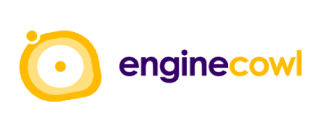Frontier Airlines’ net loss streak continues, expects return to profitability in Q4
Frontier Airlines' last profitable quarter was in Q3 2024.

Frontier Airlines, which has not had a profitable quarter in a year, has outlined that it should return to profitability in Q4 2025, with estimated adjusted diluted earnings per share (EPS) of between $0.04 and $0.20 during the last quarter of the year.
On November 5, 2025, Frontier Airlines issued its Q3 results, indicating that its lower capacity resulted in lower overall and passenger revenues of $886 million and $854 million, respectively. The low-cost carrier’s capacity, measured in available seat miles (ASMs), was down 4% year-on-year (YoY).
Barry Biffle, the Chief Executive Officer (CEO) of Frontier Airlines, said that the airline’s Q3 results “were in line with expectations as we navigated a competitive pricing environment.” Ongoing capacity reductions by its competitors throughout 2026 should support “a more balanced supply environment and improved revenue performance.”
“Early next year, we will introduce our new First Class seating and anticipate significant growth in loyalty revenues as we continue delivering the best value to our customers.”

Frontier Airlines ended Q3 with a net loss of $77 million, compared to a net profit of $26 million in Q3 2024, with EPS of -$0.34. At the end of the quarter, during which it took delivery of two Airbus A321neo aircraft and six Pratt & Whitney PW1100G spare engines, the carrier’s liquidity, which consisted of unrestricted cash, cash equivalents, and a revolving credit facility, was $691 million.
The airline outlined that during the quarter, the average number of aircraft it had in service was 163, 13 more than in Q3 2024. However, the average block hours were down 7%, with the number of total departures contracting 12% YoY.
In Q3, Frontier Airlines welcomed 8.3 million passengers, compared to 8.8 million during the same quarter in 2024. Load factors climbed 2.7%, and total revenue per passenger was slightly up to $106.44, split between the average fare of $39.74 and total ancillary revenue of $66.70.
With this in mind, the low-cost carrier’s operating expenses rose 5% YoY to $963 million, despite the fact that the company’s fuel bill was 10% lower than in Q3 2024.
The airline’s Q4 outlook outlined that its adjusted diluted EPS should be between $0.04 and $0.20, while capacity should remain flat YoY. At the same time, Frontier Airlines warned that capacity, given the dynamic nature of the current commercial environment, could change.
Just yesterday, the Federal Aviation Administration (FAA) confirmed that it would cut capacity at 40 airports across the United States to reduce safety risks as the government shutdown has continued to drag on.

In addition, the airline’s adjusted diluted EPS outlook excludes, among other things, special items, the average fuel price of $2.50 per gallon (Q3: $2.54), and “no projected tax expense provision.”
Frontier Airlines is one of the few low-cost carriers – or hybrid airlines, in the case of JetBlue – that have struggled throughout the past year or so, especially as there has been a K-shaped economic recovery that has resulted in US airlines targeting more premium travelers to ensure they remain profitable (or return to profitability).
In December 2024, Frontier Airlines unveiled first class seating as part of the next phase of its transformation plan, ‘The New Frontier.’ At the time, Biffle said that the transformation plan was part of its promise “to deliver exceptional value with unbeatable flexibility,” proving that “premium travel doesn’t have to come with a premium price tag.”







Comments ()